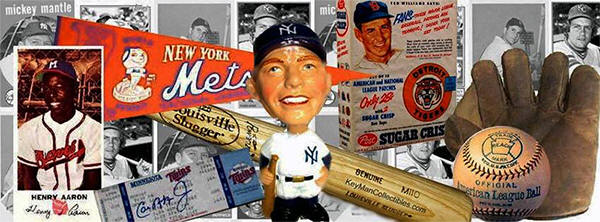 |
|
|
|
1940-1949 CATCHER'S MASK DATING GUIDE |
| |
Double and
triple carbon steel
wire, Truss
construction masks
continue to be
developed, and are
being made with a
broader design. Face
padding is commonly
laced to the frame
using leather tabs. The
one piece double bar
masks are becoming more
common than the
previous two decades. |
|
|
| Visual Glossary |
 |
 |
 |
1942 Professional Spitter
Model
Catchers Mask |
1930-1940s 5/8" Two Bar
catchers mask with Round Spitter |
1949 Reach
Catchers
Mask |
|
|
| |
The Dating of a
catcher's mask could prove
to be a difficult task.
Construction styles,
models, or features could
have been used for many
years after they were
introduced. In some cases
you could positively date a
mask to after a feature was
first introduced but you
might have to settle on
generalizing the dating to
a longer era of use. The
1940's carry on with the
mask designs from the
1930's with Double and
triple carbon steel wire,
Truss construction frames,
but made broader. World War II
slows the development of
new designs. One piece
double bar masks are
becoming more common after
the war and into the
1950's. Lacing used to
secure the padding to the
frames is more evident. |
|
|
 |
 |
 |
1940's JC
Higgins
1705 Catchers Mask |
Triple Wire Two Bar construction with ear protection.
Common style from 1930's through 1950's |
1930's/40's Kenwel
One Piece Cast Magnesium Catchers Mask |
|
| |
Post war mask development
takes the direction of the one piece cast constructed
frames. This design with the padding lace to the frame,
will carry over into the 1950's until manufactures
start to use snap on pads. The triple Wire, two bar
constructed frames that started out in the 1930's is
also made throughout the 1940's and into the 1950's.
The 1950's models can be identified by the snap on pads
but distinguishing the '40's models from masks made in
the 1930's is so slight you need to identify them in
trade catalog and ads.
Basically the main features with masks dated to the
1940-1949 manufacturing period are; bulky or broader
frames with laced padding. A common feature being used
more often are the leather tabs or flaps, that extend from the
pads that wrap around the frame and secured by lace.
Most models can be easily confused with 1930's or
1950's styles.
Because it is easier to date a mask to the era when a
feature was available I have listed a timeline below.
You might be able to use unique features on your mask
that overlap other features to narrow down the date. I
have also included catalog images so you can match
styles and construction characteristics like a
fingerprint. |
|
|
|
Catchers Mask Timeline |
- 1911 D&M introduces Electric
Welded steel wire construction.
- 1912 Reach introduces "Wide Sight"
frame construction.
- 1914 Reach introduces "The Spitter"
hole
- 1914 The first use of chin padding
that slowly replaces chin support straps.
- 1916 Spalding starts to use Truss
Support, and double wire construction.
- 1921 Aluminum one piece frame is
patented by umpire James E. Johnstone.
- 1930 Two, "eye space bars" each
constructed with three wires is patented.
- 1935 One piece molded frame with
two "eye bars" affixed to it is patented
|
|
1940-1949 Catchers Mask Catalog Samples & Ads |
|
|
 |
 |
 |
 |
1940 Goldsmith D&M
Belknap
Catchers Masks |
1941 Ken-Wel
Catchers Masks |
1942 Shapleigh Catalog Catchers Maskss |
1943 Rawlings
Catchers Mask advertising |
 |
 |
 |
 |
1943 Rawlings
Catchers Masks |
1948 Rawlings
Catchers Mask |
1948 Rawlings
Catchers Masks |
1948 MacGregor Goldsmith
Catchers Mask advertising |
 |
 |
 |
 |
1948 Rawlings
Catchers Masks |
1948 Reach
Catchers Mask |
1951 MacGregor
Catchers Masks |
1950 Goldsmith
Catchers Mask Patent |
|
|
|
|
|
|
|


